#fashion trends for women over 40 2019
Explore tagged Tumblr posts
Text
#youtube#united states#temu#aliexpress#amazon#couple#express#wedding#fashion#handbag#elegant fashion#elegant outfits for women#elegant fashion 2019#elegant fashion over 40#fashion for women over 60#classic fashion#elegant women over 60#elegant fashion women#fashion over 60#mature women's fashion#elegant outfits#classy fashion over 40#fashion trends 2024#elegant fashion 2020#elegant women style#elegant winter fashion 2019#elegant women over 40#elegant shoes for women#older women fashion#elegant fashion for over 60s
0 notes
Text
Our Variety Store

Website: https://www.ourvarietystore.com
Address: Toronto, Ontario, Canada
Our Variety Store, established in 2019, is a trendsetting online retailer known for its high-quality men's and women's apparel and accessories, including unique watches and bar accessories. The store prides itself on offering a diverse range of products that cater to various tastes and budgets. With a commitment to innovation and customer service, Our Variety Store continuously updates its collection to enhance the online shopping experience. The store's selections are carefully curated to meet customers' needs, and it offers flexible delivery options and payment methods.
Facebook: https://www.facebook.com/ourvarietystore/
Instagram: https://www.instagram.com/ourvarietystore/
Keywords:
unique gifts for women
women's clothing boutique
mens clothing online
boutique clothing for women
women's clothing online boutiques
men's clothing online
online clothing stores for men
online boutiques for women's clothing
unique men's gifts
stylish women's clothing
big and tall men's clothing online
unique birthday gifts for women
unique christmas gifts for women
unique gift for women
unique birthday gifts for a woman
affordable men's clothing
stylish women's golf clothes
cheap men clothes online
unique gifts for 60 year old woman
buy mens clothes online
designer men's clothing online
women's fashion accessories
online men clothing
online men's clothing stores
plus size men's clothing online
unique wrist watches
unique gifts for 40 year old woman
stylish plus size women's clothing
unique gifts for young women
online fashion retailers
men's accessories store
unique men's gifts under $25
stylish women's clothing over 50
affordable black-owned men's clothing brands
affordable clothing for men
affordable men's dress clothes
women's fashion accessories online
men's unique birthday gifts
stylish classic women's clothing
stylish mature women's clothing
stylish women's cycling clothing
trendy men's apparel
unique gifts for older woman
unique gifts for woman friend
affordable men's workout clothes
trending women's fashion accessories
casual stylish women's clothing
men's style accessories
affordable big mens clothing
affordable gym clothes mens
affordable mens gym clothes
affordable stylish mens clothing
affordable workout clothes men
men's and women's fashion accessories
women's fashion jewelry accessories
most unique wrist watches
unique mens wrist watches
unique wrist watches for men
unique men's gifts under $100
affordable stylish women's clothing
casual and comfortable stylish women's clothing
best online fashion retailers
high end fashion online retailers
largest online fashion retailer
luxury fashion online retailers
online luxury fashion retailers
online accessories boutique
men's hair styling accessories
best stores for men's accessories
men's accessories store near me
bar accessories online
affordable big and tall mens clothing
affordable business casual clothes men's
affordable dress clothes mens
affordable ethical men's clothing
affordable luxury mens clothing
affordable trendy mens clothing
accessories women's fashion jewelry
unique women's wrist watches
unique valentine's gifts for men
online fashion accessory boutiques
men's style wrist accessories
style accessories for men
men's accessories online store
exclusive watch collection
bar accessories online shopping
hair styles with accessories women
hair styling accessories for women
luxury style accessories for women
buy women's fashion accessories
fashionable women's accessories
latest women's accessories fashion
buy unique wrist watch
cheap unique wrist watches
mens unique digital wrist watches
unique mechanical wrist watch
unique men's wrist watches
unique men's wrist watches under 200
unique womans wrist watches
unique wrist watch for men
unique wrist watch silver
men's unique christmas gifts
men's unique gifts online
online accessories boutique uk
trendy mens golf apparel
modern men's style accessories
short men style accessories
street style accessories men
men's accessory store
buy bar accessories online
cheap bar accessories online
online shopping bar accessories
#unique gifts for women#women's clothing boutique#mens clothing online#boutique clothing for women#women's clothing online boutiques#men's clothing online#online clothing stores for men#online boutiques for women's clothing#unique men's gifts#stylish women's clothing#big and tall men's clothing online#unique birthday gifts for women#unique christmas gifts for women#unique gift for women#unique birthday gifts for a woman#affordable men's clothing#stylish women's golf clothes#cheap men clothes online#unique gifts for 60 year old woman#buy mens clothes online#designer men's clothing online#women's fashion accessories#online men clothing#online men's clothing stores#plus size men's clothing online#unique wrist watches#unique gifts for 40 year old woman#stylish plus size women's clothing#unique gifts for young women#online fashion retailers
1 note
·
View note
Text
Clothing You Should Stop Wearing Aged 40+
Clothing You Should Stop Wearing Aged 40+
We list the ulitimate style sins and faux pas' of dad style in this guide to Clothing You Should Stop Wearing Aged 40 plus.
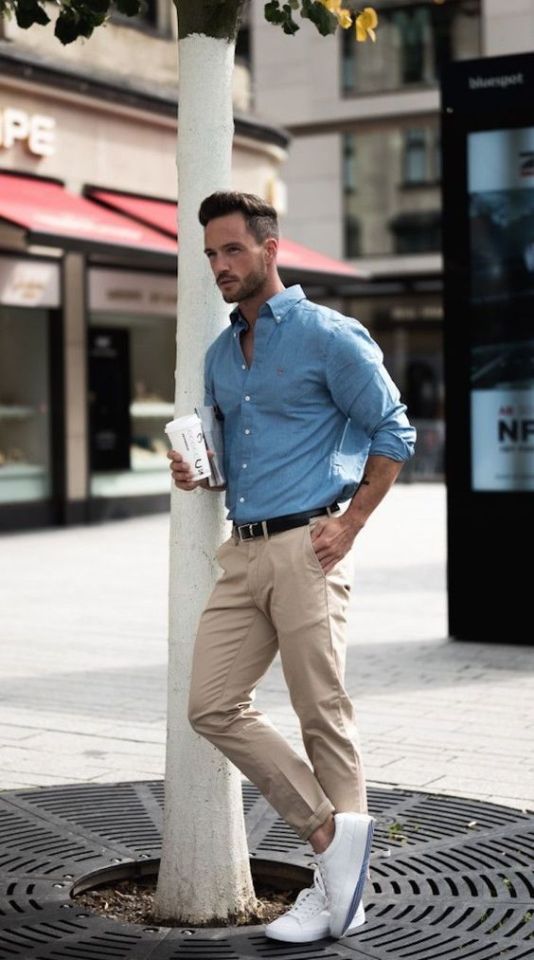
Women and Men's Fashion Clothing, Women and Men Fashion Sale

How to look taller
Here are 10 ways to look taller and leaner just by changing the way you dress. Want to dress tall? Learn these simple principles.

Men's Summer Work Style from Reiss
Summer work style is in the spotlight as Reiss proposes a smart trio of looks. The British fashion brand keeps linen in the spotlight with practical shirting

15 Easy and Cool Casual Outfits For Everyday Looks
Casual outfits are undoubtedly the easiest to style. But if you want to make the casual look classy here are some great outfit ideas for you!
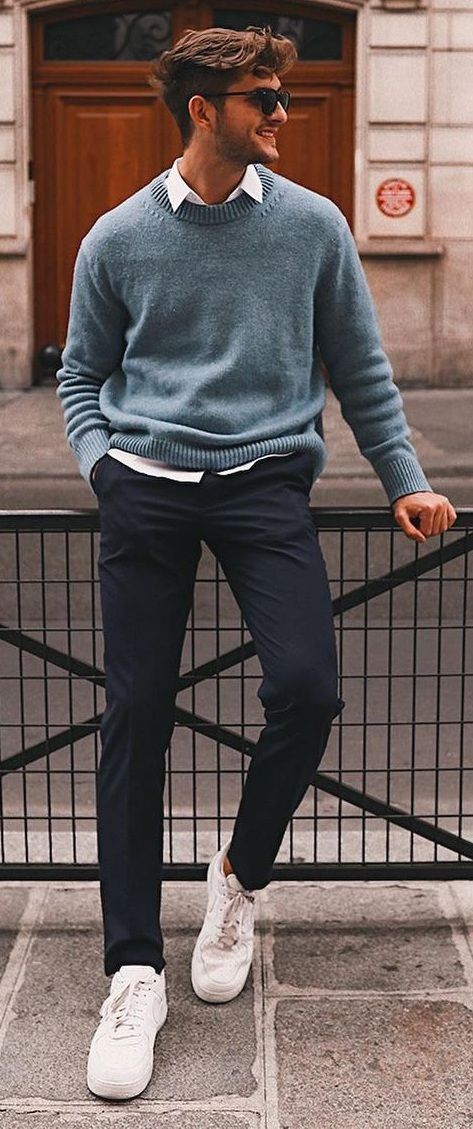
A Basic Year-Round Capsule Wardrobe for Men
I finally decided to put together a simple, year-round capsule wardrobe for men! It includes 35 basic pieces for a great foundational wardrobe or a standalone closet.
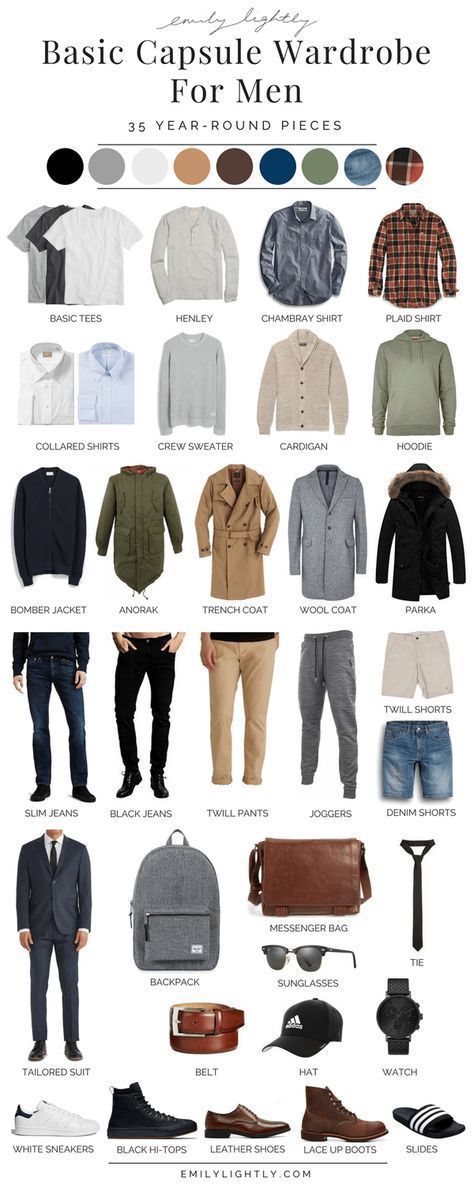
korean outfit inspo
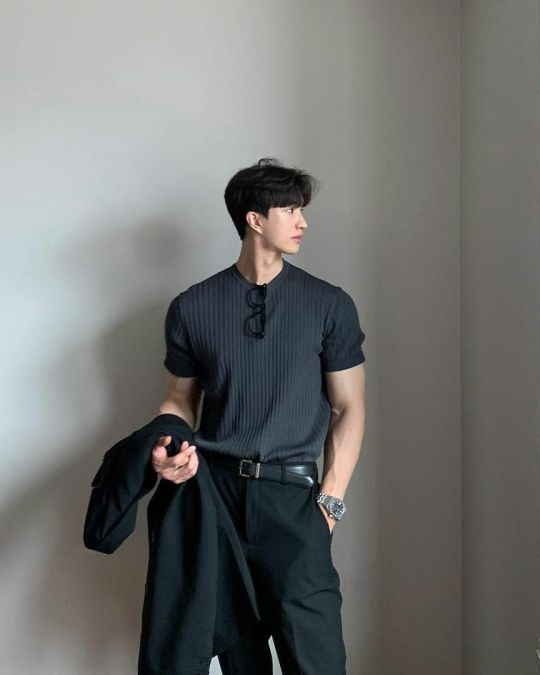
Women's Jeans for Sale - eBay
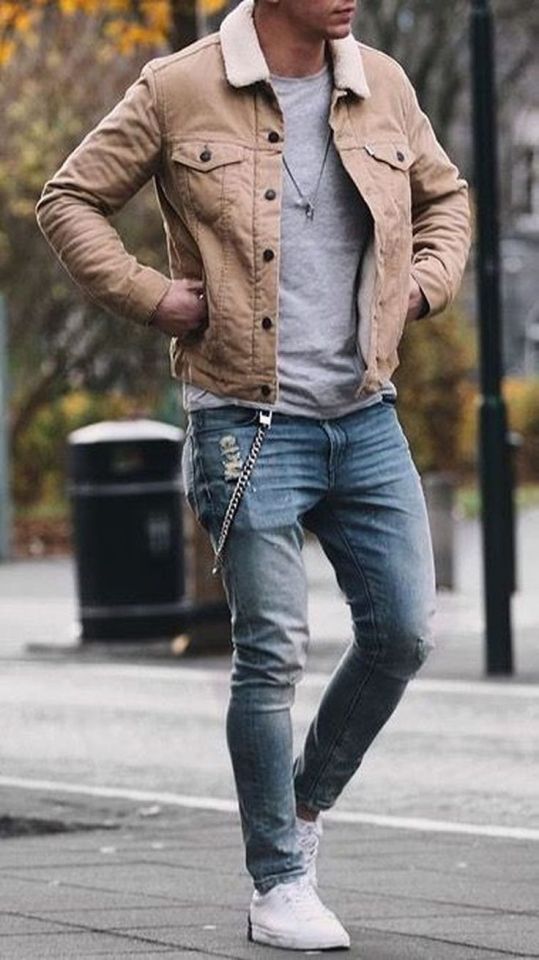
Attractive Shorts For Men #shorts - YouTube
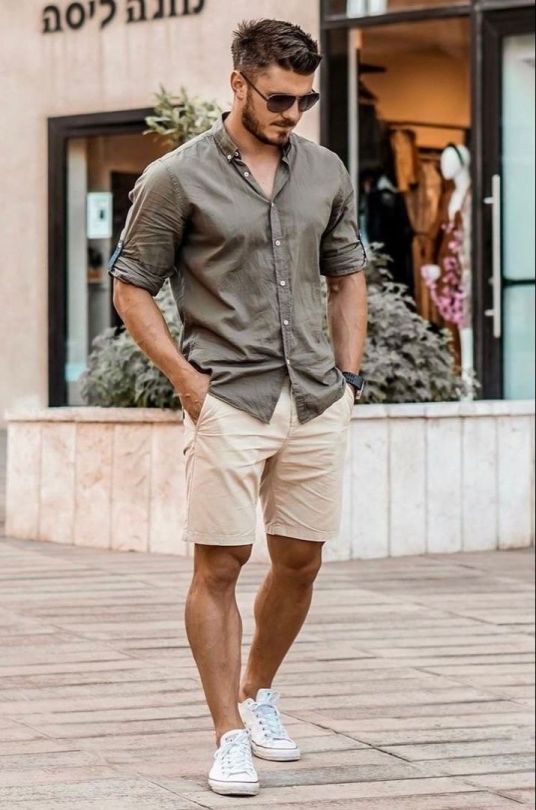
quick outfit inspo✌🏼 | Mens casual outfits summer, Street style outfits men, Men fashion casual outfits
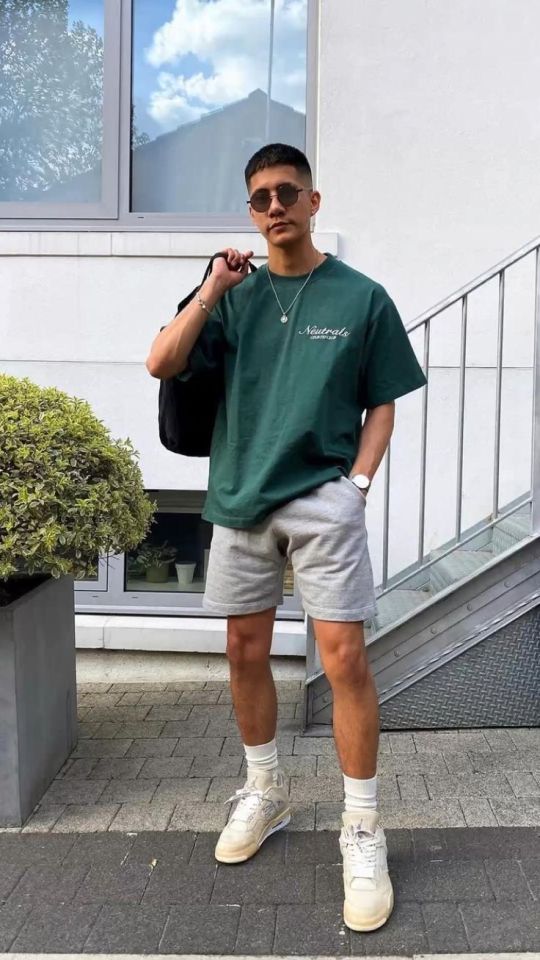
Summer outfit men
Here is a complete guide to mens fashion for summer. Check out the latest trends for this season and know how you can style them.

Mango Man 2019 Sporty is the New Casual
Alexis Petit reunites with Mango for its latest edit of menswear arrivals. The French model is front and center for "Sporty is the New Casual." Classic

How To Styles Shorts #shorts #YouTube
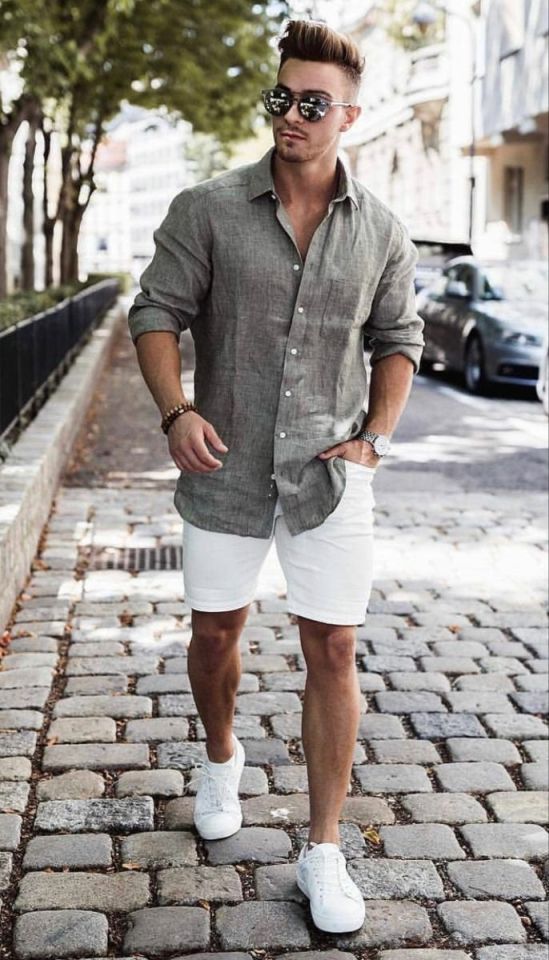
Top 8 Best Business Casual Shoes for Men (2023 Guide)
Want to know what types of shoes you should wear with business casual outfits? This guide has everything you need to know.
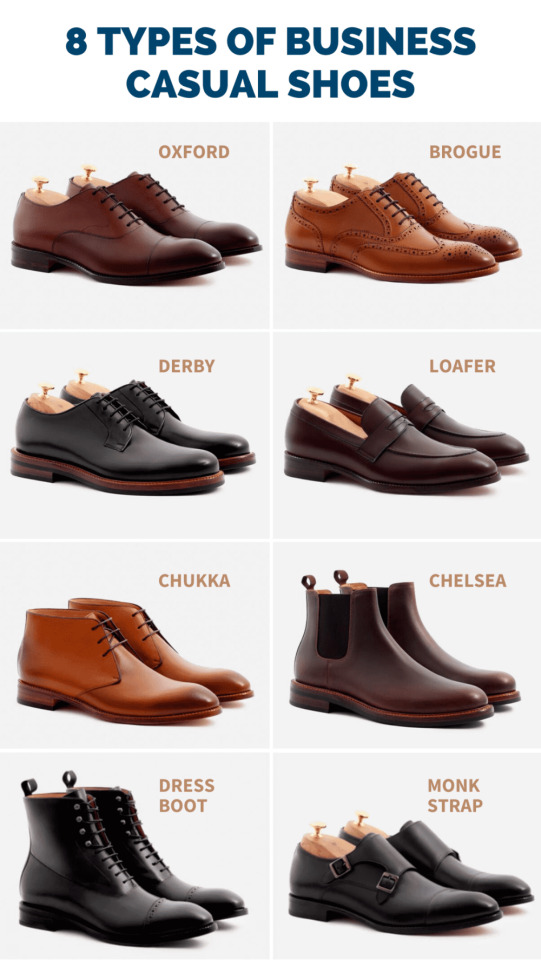
long coat men winter mens fashion idea
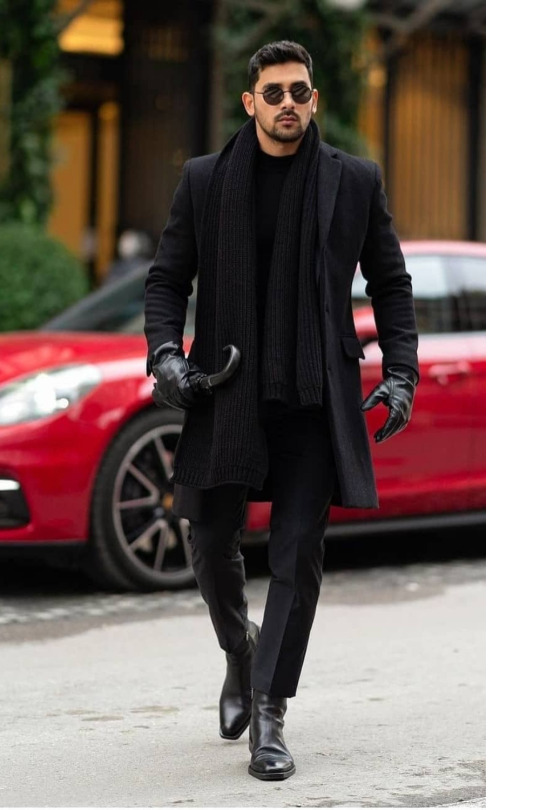

Best Mens Fashion
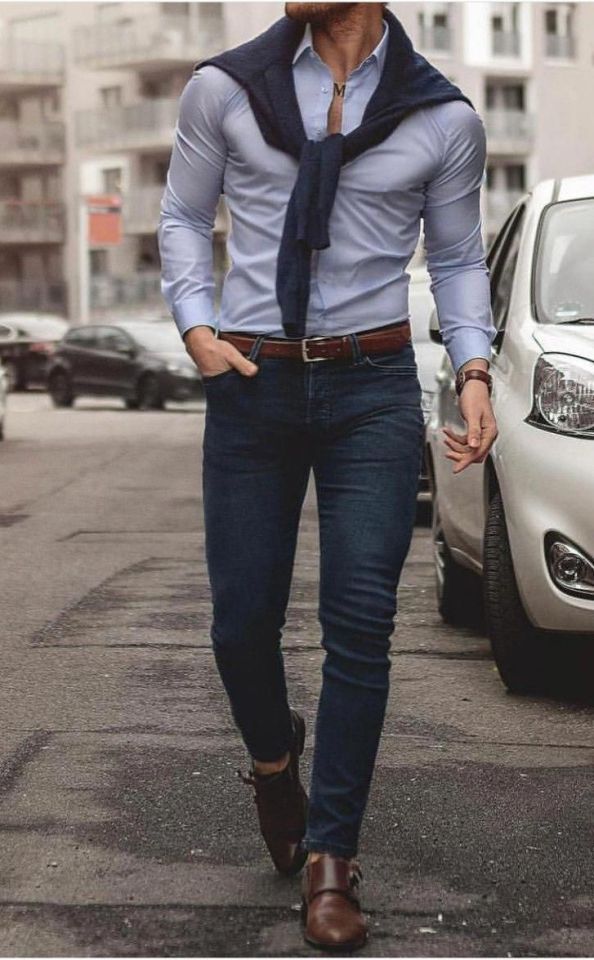
2023 Summer Dress Sale Online | Up To 30% Off
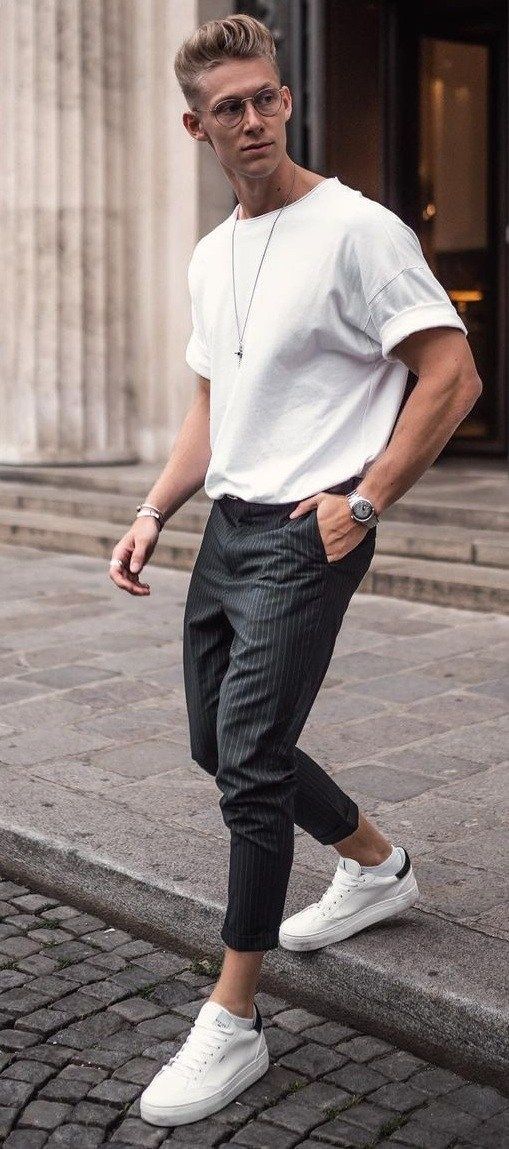
HOME > Tips & Advice >DRESS YOUR AGE AND AVOID MAKING THESE ULTIMATE DAD-STYLE SINSWritten by Rakelle Maurici in Tips & Advice on the 24th October 2016 / Clothing You Should Stop Wearing Aged 40+We live in a world where we can all dress as we please and we should feel comfortable to be able to break the rules occasionally. However, once you’ve reached a refined and mature age there are a selection of garments you need to think twice about keeping or even purchasing for that matter. Read on to be sure you’re not making these ultimate dad style sins.A Hoodie Unless this garment is used for sports purposes you should try to avoid wearing a hoody for daily occasions e.g. picking the kids up from school or food shopping. It gives a sense of laziness and is a juvenile code of dressing. Alternatively, choose a button up sweater, cardigan or pull over in either wool or cashmere.David Gandy aged 36A Baseball Cap A baseball cap on forwards could well be pushing the boundaries and wearing it backwards is just 100% wrong for your age. However, if you’re the kind of guy who likes to dress in jeans and a t-shirt, then throwing on a cap on those bad hair days won’t make you look too out of place. We recommend ditching the baseball cap altogether and opting for a flat cap for a more sophisticated piece of headwear.Patrick Grant aged 44Some Jeans Jeans are probably the one fashion item which reveals our age. There are certain styles you can get away with wearing during your twenties and thirties but unfortunately will need to go once you've reached your fourties. Ripped jeans are the biggest culprit - rips in your jeans are a fast youthful trend and people will wonder if you see yourself as an adult. The same rule applies for skinny jeans too - don’t try fitting yourself into clothing which is just too tight - instead opt for a slim/straight fit which will finish nicely over a smart brogue shoe.Jon Hamm aged 45Leather Well, unless you’re a member of the Hell’s Angels it’s hard for anyone to get away with a pair of leather pants and leather jacket, especially if you’re over 40. Just like the tight fitting skinny jeans, you need to think about dressing smart enough for your age, especially if you don’t want to be mocked by your friends and work colleagues daily.David Beckham aged 41Daring Trainers God forbid you fall into the ‘Sneans’ category and wear bad sneakers with your jeans. Yeezy trainers for example should be kept for the youngsters. Avoid choosing trainers which are bulky and opt for something sleeker and minimal in colour. Nothing screams ‘wanting to be younger than you are’ moreso than trying to pull off a pair of red high top trainers aged 40.Nick Wooster aged 56Logo Tees Simplicity becomes key at this age, so avoiding visible brand names is one thing to certainly live by. You can still have statement items in your wardrobe but unless you want to be taken seriously, large logos should be avoided. It’s important to buy good quality fabrics in a great fit rather than buying into a trendy name because no one likes a show off.Johannes Huebl aged 38Rakelle MauriciWith a thirst for exploration and over 10 years of writing experience, Rakelle is a keen fashion, travel and culture storyteller. Her work, from city guides to short stories, has been featured in both global print and digital media. Please enable JavaScript to view the comments powered by Disqus.comments powered by Disqus
0 notes
Text
Tinted Cosmetics Market Trends, Growth, Size, Segmentation, Future Demands, Latest Innovation, Regional Forecast to 2032
According to Future Market Insights (FMI), the global tinted cosmetics market is estimated at US$ 1.5 Bn in 2022 and is projected to reach US$ 2.29 Bn by 2032, with overall sales accelerating at a CAGR of ~4.3% from 2022 to 2032.
Tinted cosmetics are commonly used by people all over the world to cover up blemishes, uneven skin tone, and pores on the skin. These cosmetic products are gaining popularity, as they help in achieving a natural and makeup-free look.
Tinted cosmetics are lighter than other makeup and cosmetic products, and do not affect skin health, as they have simple pigments without any chemical compounds.
The cosmetics industry was valued at more than US$ 380 billion in 2019, with more than 40% share held by face cosmetics. Cosmetics for facial use are very popular, as facial beauty is considered the most important factor.
Request a Report Sample to Gain Comprehensive Insights @ https://www.futuremarketinsights.com/reports/sample/rep-gb-15883
The lip and cheek tints and eye tints are the next popular tinted cosmetic products. Men and women both are commonly using these products, as they are based on skin complexion. Tinted products for men include moisturizers and serums, which provide additional benefits to the skin. Due to their vast uses, tinted cosmetics are popular among customers.
However, the market is restrained by presence of counterfeit products, regulations on use of chemical ingredients in several countries, and the competition among the top manufacturing brands.
“Changing fashion trends and growing penetration of social media are expected to play a significant role in boosting the tinted cosmetics market during the next ten years. Besides this, development of multifunctional products with natural ingredients will bode well for the market,” says an FMI Analyst.
Who is Winning?
Leading players operating in the tinted cosmetics Live Tinted, Nykaa, Ulta, Tint Cosmetics, e.l.f., Lab Series, Maybelline, Lakmé, Oriflame, Nivea, Bobbi Brown, BareMinerals, Kosas, and Rare Beauty among others.
For any Queries Linked with the Report, Ask an Analyst @ https://www.futuremarketinsights.com/ask-question/rep-gb-15883
0 notes
Video
youtube
2019 Trends for women over 40 – fashion for women over 40
In this LIVE video I share my top two 2019 fashion trends that are easy to follow AND will save you money.
#tracy gold fashion tips#over 40 fashion#fashion over 40#2019 fashion trends for women over 40#over 40 style#fashion trends 2019#fashion for women over 40#top 2 2019 fashion trends
1 note
·
View note
Text
The Top 10 Fall 2019 Trends for Women Over 40
Here are the Top 10 Fall 2019 fashion trends that are best for women over 40. #fashion #over40 #fallfashion #fall2019

While we’re never happy to see summer end, there is one thing that we love about the changing of the seasons – it’s time to switch things up. There’s something about fall that always makes us ready to update our wardrobes. Maybe it’s the memory of getting new clothes for school, maybe it’s excitement about finally getting to wear layers or maybe it is just because the fall trends are so great…
View On WordPress
0 notes
Link
Does Interior Design Have a Gender Problem?
March 3, 2020
Yes, it does, and it may not be what you think…
Look around the room at any interior design industry event and you will see a sea of mostly female faces. It certainly appears that the industry skews largely toward women, and that is borne out by statistics. According to Data USA, the percentage of women awarded interior design degrees within the five largest undergraduate programs in the country was 89.7 percent in 2016. The National Center for Education Statistics (NCES) puts the number of female graduates nationwide even higher, reporting 93.6 percent in 2018.
So the question you might ask is “Where are the men?”
In contrast, the speakers, panelists, and awardees at those same industry events trend much more toward being male. For example:
• Over the past 40 years, 65 percent of the Contract Designer of the Year winners have been male.
• Over the past 30 years, 75 percent of the Interior Design Hall of Fame members have been male.
• While ASID and IIDA fellows are a little more than half female, they do not mirror the percentage of women in the profession.
• Forty-three percent of presenters/panel participants at NeoCon 2019 were male. (Interestingly, most panels were largely female, and most single presenters were male. That could be the topic for another essay!)
What about firm leadership? There don’t appear to be any statistics out there right now, so I did some old-fashioned counting, looking at 11 of the largest interior design firms’ websites (after eliminating other disciplines such as architecture, planning, and support).
Thirty-three percent of these large firms’ partners or principals are female; 67 percent are male. The statistics are almost exactly the mirror image of the percentages of women and men in the profession.
In order to get a snapshot of the makeup of leadership for product and manufacturing companies, I looked at six of the largest furniture companies that are publicly traded (so their leadership information is available online). The numbers are even worse:
Of the six companies, only one had a female CEO, and that firm didn’t have any other women in the C-suite. The percentage of C-suite women at the six companies was 5 percent.
An industry that starts off as approximately 90 percent female ends up with far fewer women as leaders. This differs from architectural practice, which had a much smaller pipeline of women entering the profession and only recently has reached a graduation rate approaching parity at 42 percent female, according to the National Architectural Accrediting Board. As mentioned above, there is a much larger percentage of women starting out in the interior design profession, making the drop-off in percentage of women holding leadership positions even more striking. What happens to all that talent? Do women stall out in midcareer, never advancing beyond midlevel positions? Do they drop out, and if so, why? (The fact that the graduation rate is 90 percent female but the industry as a whole is only 70 percent female seems to say a lot of them leave.) Do they form their own (largely residential) firms? Or do they do something else entirely?
At the moment, there are apparently no quantitative statistics and no qualitative surveys. This is in contrast to the situation in architecture; after a big ruckus and the #MeToo movement, the AIA now collects gender information for its members. It also has sponsored large-scale detailed studies such as the latest Equity by Design survey, which seeks to find out what happens to architecture graduates (male and female) in mid- and late career and why. (Its most recent survey covered 14,000 respondents.)
If in fact women are not making it into leadership positions, understanding the reasons why would help to address the issue and level the playing field.* What can be done?
The first goal would be to establish a baseline of numbers, thus confirming (or refuting) that there is a gender imbalance, one that is clearly not a pipeline issue. The second goal would be to try to parse out what happens to women as they move through the trajectory of their careers. The industry starts out with 90 percent women graduates, dropping down to about 70 percent of practitioners and vendors who actually stay in the field, dropping down again to about 30 percent of actual leaders of firms, and dropping even further to less than 20 percent of leaders of product companies.
Only after we understand through hard data whether there are impediments preventing women from making it to the top of the profession and, if so, what is causing them can there be a meaningful and impactful effort to make sure that there will be fairness and equity for all who enter the profession, regardless of gender.
*For the purpose of simplicity, I have not addressed the obstacles faced by both men and women of color or nonbinary gender here. These are factors that almost certainly would affect career trajectories and should be included in any surveys.
Joan Blumenfeld, Contract magazine’s 2018 Legend, is a design principal at Perkins and Will, a global architecture and interiors firm. Over the past 20 years she has been committed to achieving gender equity across all aspects of the design and construction business, as well as being an active advocate for building better and healthier interiors, buildings, and communities. Her widely published and award-winning work is notable for incorporating socially responsible principles of designing for health and sustainability.
33 notes
·
View notes
Text
Pornification and female self-image (Week 8)
When scrolling through Instagram, it is highly unlikely to avoid pictures of women in small bikinis or lingerie, accentuating their features on pages such as the Kardashians’ or Fashion Nova. This can be described as “pornification” of the media, a display of heightened female sexuality as a form of self-commodification to gain likes or followers (Tyler & Quek 2016). For the modern feminist this arises an inner conflict; is pornification a movement of body positivity and removing shame around female sexuality, or is it purely the objectification of women in a heteronormative society?
One of the most followed accounts on Instagram is that of Kylie Jenner, having a total of 174 million followers. Many of Kylie’s posts are of her wearing minimal clothing, accentuating features such as her breasts and her behind. From a sex-positive outlook, it is important to explore women’s sexual desire, agency, and to challenge traditional femininity. Posting these images of herself may be a format to show young girls that sexuality is nothing to be ashamed of, that it is normal and necessary for self-love and self-care (Trinh 2016). From a feminist outlook, women’s bodies are beautiful and have no need to be hidden, and it is liberating to be able to celebrate them online (Ross 2010).

Image from @kyliejenner on Instagram.
The issue then arises when these influencers idealise their lifestyles, promoting body image ideals that are almost unachievable and unhealthy both physically and mentally. With many of these influencers being celebrities, they have the luxuries to create perfectly-lit photos with professional make-up artists and photographers. They have been taught how to angle their body to enhance their features, and many have had some form of fillers or botox (Malacoff 2019). Repeated exposure to these images may present them as a being normative, which may lead to women participating in harmful activities to “fit in”. Such include drinking dangerous weight loss substances such as Kim Kardashian’s “flat tummy tea” (Malacoff 2019), or showing heightened interest in body modification, as according to 2017 statistics from the American Academy of Facial Plastic and Reconstructive Surgery, 42% of surgeons report that their patients are seeking aesthetic surgery to improve their appearance on social media channels (Dorfman et al. 2018).

Image by @florencegiven on Instagram.
These “perfect” women are often called out and ridiculed by other influencers, who identify with the body positivity movement. Celeste Barber, often hailed as the “celebrity queen of comedy”, has an Instagram account with over 7.1 million followers (@celestebarber). The premise of her Instagram account is to parody model shoots of the most famous and beautiful celebrities by comparing what it might look like for an average woman to strike those same poses (McKay 2019). The images and videos posted mimic those of celebrities such as Victoria Beckham, Beyonce, the Kardashians and Gigi Hadid, highlighting that often the content posted by these influencers is unrealistic. In her interview with Vogue, Celeste explores her outlook on body positivity throughout her life, outlining her discovery that “looking a certain way has currency”, and that “body shaming and healthy living are not the same thing”. She is often approached by detox tea companies, however turns them down as she refuses to promote any products that make women feel we need to look a certain way to feel a certain way (Baker 2019).
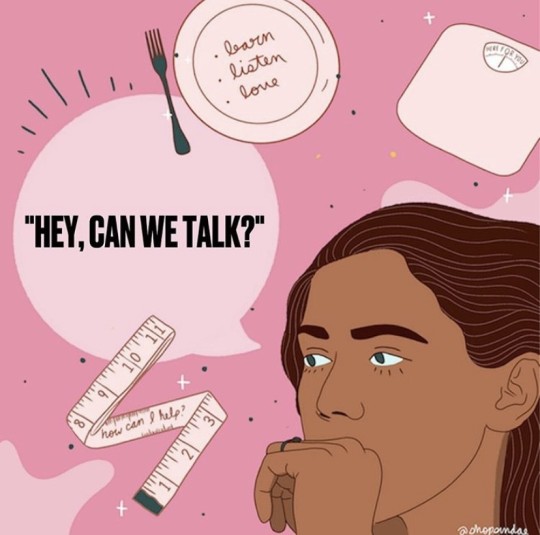
Image from @i_weigh on Instagram, artist is @shopsundae
Similarly, Jameela Jamil is an actress, feminist and advocate who has utilized social media to create an online space for body-positivity. On Jameela’s Instagram account (@jameelajamilofficial), holding over 2.9 million followers, the actress posts uplifting messages for women, sparks political conversation and calls out other celebrities and influencers promoting dangerous ideals. She has emphasised the harmful effects of detox teas and appetite-suppressing lollipops promoted by Kardashians (Dickson 2018), and detailed her views of waist trainers such as ‘Slim Tum’, stating in the caption of her post that “feminine is a vibe, not a fucking shape”. She has also established a second Instagram account (@i_weigh) with over 1 million followers, sharing messages of intersectionality and body positivity, creating a space for followers to share what they value about themselves other than their appearance. The account was established as she was “tired of seeing women just ignore what’s amazing about them and their lives and their achievements, just because they don’t have a bloody thigh gap” (Dickson 2018).
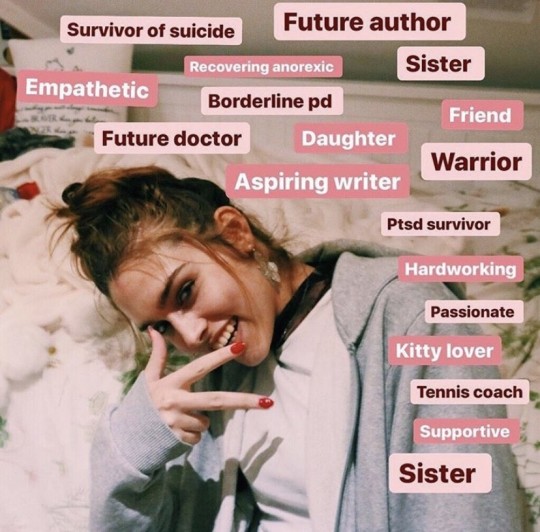
Image from @i_weigh featuring @ssedonaa
Ultimately, women have the right to express their sexuality and celebrate their bodies without shame, provided they are not fostering negative, damaging standards of beauty. It is important for large influencers to remain honest with themselves and with their followers in order to empower and healthily support each other.
References:
Baker, V 2019, Celeste Barber on body image, social media and the realities of healthy living, Vogue, viewed 8th May 2019, https://www.vogue.com.au/beauty/wellbeing/celeste-barber-on-body-image-social-media-and-the-realities-of-healthy-living/news-story/6213ecafcfb4badf85cdc18e9138a6bd (Accessed: 8 May 2020). Dickson, E.J 2018, How Jameela Jamil built a brand around body positivity, Vox, viewed 8th May 2020, https://www.vox.com/the-goods/2018/12/4/18124392/jameela-jamil-good-place-body-positivity
Dorfman, R, Vaca, E, Mahmood, E, Fine, N & Schierle, C 2018, ‘Plastic Surgery-Related Hashtag Utilization on Instagram: Implications for Education and Marketing’, Aesthetic Surgery Journal, vol. 38, no. 3, pp. 332–338 Malacoff, J 2019, Following Your Favorite Celebs On Instagram Might Be Bad for Your Mental Health, Shape, viewed 8th May 2020, https://www.shape.com/lifestyle/mind-and-body/celebrity-social-media-affects-mental-health-body-image
McKay, R 2019, Celeste Barber: 11 Things You Didn't Know About Celeste, Who, viewed 8th May 2020, https://www.who.com.au/celeste-barber-11-things-you-didnt-know-about-celeste
Ross, K 2011, ‘Gendered Media: Women, Men and Identity Politics’, in J Wood (ed), Communication Research Trends, vol. 30, no.4, pp. 37
Trinh, S. L 2016, ‘“Enjoy Your Sexuality, but Do it in Secret”: Exploring Undergraduate Women’s Reports of Friends’ Sexual Communications’, Psychology of Women Quarterly, vol. 40, no. 1, pp. 96–107
Tyler, M & Quek, K 2016, ‘Conceptualizing pornographication’, Sexualization, Media, & Society, vol. 2, no. 2, pp. 1‐ 14.
16 notes
·
View notes
Link
For more than a year, Los Angeles-based streetwear designer Tremaine Emory had been working with Converse on a red, green and black sneaker inspired by Jamaican political activist and Black nationalist Marcus Garvey’s Pan-African flag and artist David Hammons’ 1990 work “African-American Flag,” an original of which was acquired by the Broad museum in Los Angeles last year.
Emory’s brand, Denim Tears, tells the story of Black people in the United States starting in 1619, when the first documented enslaved Africans arrived in Virginia; according to the designer, the brand’s logo, a cotton plant, is a direct reference to slavery. That’s why the proposed packaging for his Converse sneaker collaboration depicts a coffin covered with Hammons’ flag and a cotton wreath, as a tribute to Black Americans who have died under unjust conditions. The image is based on an art installation, “A Proper Burial, Thanks America,” that Emory debuted in London last year.
However, in late May, as protests spread across the country after George Floyd’s death in police custody, Emory announced on Instagram that he and Denim Tears couldn’t go forward with the partnership until Converse’s parent company, Nike, went beyond its plan to donate $40 million over four years to support the Black community. (Michael Jordan, through his Nike subsidiary Jordan Brand, is donating an additional $100 million over 10 years.)
Emory called the move by Beaverton, Ore.,-based Nike, which reported $37.4 billion in revenue last fiscal year, a very expensive Band-Aid. He said he wanted to use his voice to push Nike to look inward at its own record on diversity and inclusion.
“It’s accountability,” Emory said in a phone interview. “It’s about Fortune 500 companies and how they are run under the guise of white supremacy and patriarchy and how I take accountability, that I need to see the steps — and brands that I work with dispensing that — or guys won’t work with me.”
In recent months, nearly all major industries, including entertainment, journalism and sports, have been forced to confront how closely their statements opposing systemic racism align with their treatment of Black and brown employees. The fashion industry, which has frequently been criticized for cultural appropriation, instances of blackface and a lack of diversity, is no different.
According to a count by trade publication Women’s Wear Daily, Black people make up only 4% — 19 out of 477 members — of the invitation-only Council of Fashion Designers of America, whose new chairman is Tom Ford. In an email to The Times, a CFDA spokesman said, “The CFDA does not record nor require members to state their race upon application, but it is estimated that members of color make up approximately 25% of the total membership.”
June 8, 2020
In anecdotal comments, Black streetwear designers from L.A. to New York told The Times that their subset of the fashion industry is no different.
“You can’t ignore the fact that there aren’t many Black brand owners in the streetwear space,” said Scott Sasso, who founded 10.Deep in 1995 while he was a student at Vassar. “And [at] some of the biggest companies, I don’t know if they’ve even had Black employees.”
Streetwear brands such as Denim Tears and 10.Deep offer casual clothing, primarily for men, that blend the styles of various subcultures, including hip-hop (as popularized in the 1990s by brands such as FUBU, Walker Wear and Phat Farm) as well as surf and skate motifs. It’s an identity that can be found in the clothing from brands such as Supreme and Stüssy. Instead of offering widely available, mass-produced products, streetwear brands tend to offer limited-edition drops for consumers who hear about companies through social media or by word of mouth.
Although Black style — from hip-hop to sneaker culture — has played a major role in shaping the fashion industry while bringing new designers and brands to prominence, Black fashion professionals and streetwear brand owners said in interviews with The Times that the clothing industry has failed to elevate and promote Black creatives in a way that reflects that influence.
Several designers also questioned the sincerity of corporations promising to invest in Black communities. They reflected on their own experiences trying to explain Black art to predominantly white company leaders.
Chicago-based designer Joe Freshgoods started selling T-shirts in high school and has been selling his designs out of Fat Tiger Workshop, the streetwear retail hub he co-owns, since 2013.
“I feel like a lot of these brands are in these boardrooms having these talks about how to fix this or how to just clean up their mistakes real fast, and it’s just like, ‘Hey, let’s just fill in the blanks real quick and see if this will make them happy,’” Freshgoods said.
He said he tried to include the logo of the Black Panther Party on a design for an Oakland-themed collaboration with an apparel brand last year. The company’s legal department rejected his proposal. At the time he went along with it, but now he’d push back, he said.
“A lot of Black collaborators are the reason why a lot of brands are super successful right now, so that’s a lot of power to have,” Freshgoods said.
Emory, who has partnered with New Balance and Levi’s, called on Nike to stop supporting Republicans while President Trump is the party’s leader. He also wants the company to release more information on its record of hiring Black employees and assist in “the defunding and total reform of all the police departments across America.”
Since his initial Instagram post in June, Emory has spoken to Converse Chief Executive G. Scott Uzzell or Uzzell’s team about a half dozen times over the phone or in video-conference meetings. In those discussions, Emory said the company acknowledged it hasn’t done everything it could in terms of creating a diverse corporate structure and laid out its hiring plan, especially in its executive suite. The designer said he discussed current initiatives at Nike to invest in Black communities and to address systemic racism and police brutality. “They want to get involved in all that, and we will see,” he said.
The release date for his red, black and green Converse sneaker has been moved up from February to October, ahead of the November election. Emory said the marketing for the shoe will focus on promoting voting. The shoe will be available in North America, Europe and online for $95 to $100.
“We respect and encourage the efforts of any collaborator or athlete we work with to raise their voice against racial injustice,” a Converse spokesperson said in a statement to The Times. “We have spoken with Tremaine and look forward to working through these issues together.”
At its core, streetwear is about authenticity and the personal connection between consumers and the designers and labels they love.
The push by larger brands and corporations — specifically in the fashion industry — to meet the current moment with statements, donations and new initiatives is in direct contrast to what many Black streetwear designers have been doing since the inception of their brands. Those designers have been hiring diverse staff, speaking up about political issues and infusing their works with references to Black culture.
“Now I feel like everybody’s rushing to make some type of relevant shirt or make some relevant message on their Instagram,” said Zac Clark, a Black designer who started his brand, FTP, while in high school in Los Angeles. “To me, a lot of this stuff right now seems very unnatural and just forced from a lot of these brands, so they won’t get ‘canceled.’”
Olivia Anthony, the designer behind the Livstreetwear brand, said the turning point for her New York-based company was her 2017 My Love Letter to Our Culture collection, which paid tribute to Black trends of the ’90s — think long nails, grills and slicked-down baby hairs — that were largely considered unfashionable until they were adopted by other races.
“It was so beautiful, but it was looked down upon,” said Anthony, adding that she wanted her brand to reflect how those Black trends, now featured in magazines including Vogue, have been “shown in a different light.”
Kacey Lynch said he created his South L.A.-based streetwear company, Bricks & Wood, after years of working at streetwear brands where he felt Black representation was missing.
“They wanted a lot from us, but they didn’t want to do the work, what it took to understand us,” Lynch said of his past employers. “Whether that’s Black culture, South-Central, minorities … wherever the cool came from, they all wanted it but they didn’t really know how to identify with it.”
In May 2019, fashion website Hypebeast and Strategy&, a consulting firm in the PwC network, released its Streetwear Impact Report, based on interviews with more than 40,000 Hypebeast readers and 700 global industry insiders. The survey found that 70% of respondents said they care about social issues, 59% said brand activism is important and 47% said they would stop shopping from a brand because of inappropriate behavior.
“It’s fine as a starting point for corporations to say, ‘This is what we stand for and this is what we believe,’” said Elena Romero, a fashion journalist and author of 2012’s “Free Stylin’: How Hip Hop Changed the Fashion Industry.”“But that’s not going to be enough.”
Romero, an assistant professor at New York’s Fashion Institute of Technology, said companies likely will face questions over where they invest their profits, the diversity of their staff and how they’ve helped build the communities from which their dollars are coming. She said many companies will realize they’ve fallen short because the answers to those questions weren’t a priority until their profits were at risk.
“Now the consumer is saying, ‘You can’t fool us anymore,’” she said. “If you’re not authentic and truly supporting the very same things that these young people believe, your business will suffer.”
The result has been an industrywide push to make those investments now but also to make amends for past inaction. After Black Adidas employees criticized the company’s response to racism, Adidas announced June 9 that it would add more diverse staff, start a scholarship program for Black employees and invest an additional $20 million over four years in programs that serve the Black community. A day later, Adidas upped its $20 million pledge to $120 million. (In addition to those changes at Adidas, the company’s global head of human resources, Karen Parkin, resigned at the end of June after facing criticism for her handling of racial discrimination.)
Adidas also apologized for its past silence. “For most of you, this message is too little, too late,” a tweet from the Adidas account read. “We’ve celebrated athletes and artists in the Black community and used their image to define ourselves culturally as a brand but missed the message in reflecting such little representation within our walls.”
In the broader fashion community, various organizations and members of the industry have offered different strategies for creating a more inclusive environment. Aurora James, a New York-based creative director, started the Fifteen Percent Pledge, which calls on companies to provide at least 15% of their shelf space or contracts to Black-owned businesses.
After the CFDA announced its plan to promote diversity, a group called the Kelly Initiative called for the CFDA to adopt its proposal to conduct and publish a census of diversity in the industry, audit its recruitment practices and release an annual list of top Black talent, the Kelly List. The initiative is named after the late Patrick Kelly, a Black fashion designer who rose to prominence in the 1980s with work that played with Black cultural symbols and racial stereotypes.
April Walker, whose New York brand Walker Wear was worn by ’90s hip-hop stars including Method Man, Tupac Shakur and the Notorious B.I.G., stressed that Black designers need to look outside the fashion industry for success by collaborating, mentoring and sharing resources with their counterparts.
“We just need to not look for the fashion industry, as it’s been very oppressive for the last 30 years, to be the end-all, be-all for our opportunities,” she said, “but to create our own.”
Among streetwear companies, the effort to fight systemic racism in the country and the fashion industry has been on an individual basis, with brand owners of all races deciding how much they’re willing to give back and how comfortable they are using their platforms to discuss and condemn racism.
For some, that means speaking up in solidarity with the Black community. Bobby Kim, cofounder of the Hundreds, a Vernon-based clothing brand, teamed with Pharrell Williams’ brand Billionaire Boys Club to raise money for Black Lives Matter and the Black Mental Health Alliance with a shirt that was available for 48 hours. After the Fairfax shopping district where his shop is located was vandalized in late May, Kim, who’s Korean American, defended the right to protest.
In an interview, Kim said, “If you have been given a lot of money, and especially if that money has come by way of participating, contributing, or even stealing or borrowing from Black culture, then you — more than anybody else right now — need to tithe, need to pay up, in a sense, in order to reflect how influential Black culture has been in your career and your profitability as a company.”
Sasso’s 10.Deep stopped selling its regular collection for most of June and instead offered a new line of 10.Deep products to draw attention to activism against racial injustice and police brutality. The profits went to national bail funds for protesters.
“Streetwear, in its truest form, is about shooting yourself in the foot as often as possible but also just doing what you think is right,” Sasso said.
He said he was drawn to streetwear because it was a multiethnic community of different countercultures, a blend of the skate, surf, hip-hop and graffiti scenes, with a dash of punk rock, united by an exclusive knowledge of where to find and buy certain brands.
However, he has noticed a shift among streetwear consumers. For some shoppers, it’s not about the community. It’s just about the clothes.
He said he lost “several thousand” social media followers after he posted about Black Lives Matter and has received comments asking him to just stick to fashion.
“My thought is: If you want just some regular clothes, go buy Banana Republic, go buy Levi’s,” he said. “Those are companies that aren’t gonna take political stances. They’re providing basic stuff. This space is about a culture. If you want to participate in it, this is what it’s about.”
#@latimes on instagram#black streetwear brands#bobby kim#blm#nike#denim tears#cfda#elena romero#how hip hop changed the fashion industry#streetwear blog#olivia anthony#aurora james#fifteen percent pledge
2 notes
·
View notes
Text
Nine change makers in the Netherlands making fashion more sustainable

The fashion industry is the second biggest polluter on the planet, responsible for around 10% of all global carbon emissions and tarnished by a reputation for sweatshops – but it doesn’t have to be this way. DutchNews.nl shines a light on nine innovators in the Netherlands helping to make the sector more sustainable. Consumers in the Netherlands discard about 210 tons of unwanted clothing and textiles each year, two-thirds of which is incinerated; while the Dutch fashion industry has an annual surplus of around 21.5 million items of unsold clothing, often produced by poorly treated workers and not built to last. Each garment produced has an average carbon footprint of 20kg. Changing practices in the clothing industry is crucial to meeting the country’s emission targets and improving the industry’s human rights record. Here are nine change makers in the Netherlands leading the way. Loop.a life Knitwear brand Loop.a life has abandoned the wasteful model of regularly changing, seasonal collections and focuses instead on creating long-lasting essentials for men and women. The cotton and wool garments are created from recycled knitwear and denim using an entirely circular, closed-loop process. Removing the need to cultivate the raw materials saves around 500 litres of water per sweater for wool and between 5000 and 15,000 litres for cotton. Founded in 2016 by Ellen Mensink, Loop.a life were the first Dutch company to use 100% recycled yarn, most of it sourced in the Netherlands. Similar colours are carefully selected and combined with industrial waste and Eucalyptus wood fibres, which means no dye is needed. Arch & Hook It’s not just textiles that the fashion industry wastes. When garments are transported from factories to stores and hung on branded hangers, the plastic placeholders are discarded, condemning an estimated 85 billion single-use hangers to landfill each year. Since 2015, Amsterdam-based Arch & Hook has sought to change this by producing high-quality hangers made from sustainable materials. Previous collections have included bespoke hangers for clients such as Karen Millen and Harrods made out of FSC® certified wood, and last year, supported by Roland Mouret and the British Fashion Council, the company launched BLUE®, the first ever hanger made of upcycled ocean bound thermoplastic. ‘At Arch & Hook, we strongly believe that we are in the early stages of a new industrial revolution,’ says CEO and founder Sjoerd Fauser. ‘Cleaning up what humanity has caused is crucial before eliminating plastics entirely.’ Amsterdam-based &Wider Examining the whole chain of production is crucial to making fashion more ethical. Amsterdam-based &Wider has been helping businesses bridge the data gap on working conditions in the clothing industry since 2014 by providing actionable results to drive material improvements in workers’ lives and in the businesses that employ them. Through their online platform, buyers and employers can gather anonymous data direct from workers, and use this information to implement changes in labour practices along the supply chain. ‘The fashion industry cannot work ethically without hearing from workers themselves,’ spokesperson Sesihle Manzini told DutchNews.nl. ‘The design of our system allows us to hear from vulnerable workers: those who we often hear about, but rarely hear from.’ MUD jeans Mud, a natural, endlessly recycled material, inspired the name behind this sustainable jeans company headquartered in Laren. Founded in 2013 by industry-insider Bert van Son, who had seen first-hand the unethical practices in the sector, MUD has taken a different tack by producing garments made from up to 40% recycled materials and coloured with Cradle2Cradle dyes. 95% of the water used is recycled through reverse osmosis, reducing water use to about one third of the industry standard. Clients can rent or buy jeans, repairs are free, and they can get reductions on loans or purchases by cashing in any brand of old jeans with at least 96% cotton content. The Fabricant Thanks to Amsterdam-based digital fashion house The Fabricant, the digital dress is now a fact – and sold last year for $9500. The assertion that the clothes with the least environmental impact are those which do not exist is hard to argue with – even if it requires a total rethinking of how we promote fashion. The Fabricant specialises in 3D fashion design and animation, offering an alternative to physical concepts such as runway shows, sample sizes and photo shoots. The potential to try clothes on our digital selves, or create a digital advertising campaign can only cut carbon costs. United Wardrobe Founded in 2014 by three students from Wageningen with a mission to make second-hand clothing the buyer’s default, this online marketplace has over 4 million subscribers. From its headquarters in Utrecht, United Wardrobe has now opened its doors to France, Germany and Belgium, allowing users to buy and sell everything from designer shoes to onesies for newborns. ‘People are way more conscious than six years ago,’ co-founder Thijs Verheul told DutchNews.nl. ‘We have already people of age 12 selling and buying secondhand clothes, not because it is cheap for them, but really because they love the sustainable factor.’ Renoon ‘I was so fed up with opening dozens of windows in my browser to find sustainable alternatives that matched my style,’ says Iris Skrami, who co-founded Renoon to fill a gap in the market for a curated one-stop online shop for eco-minded style seekers. The app and website, which launched in 2019, feature new and pre-owned items with emerging brands such as Fisch and PANGAIA listed alongside established designers such as Stella McCartney and Filippa K. ‘There are so many brands and products already in the market that we should have easier access to,’ says Skrami. Fast Feet Grinded Fast Feet Grinded are urban miners, seeking out wasted resources that gain new value when repurposed. In this case it’s our discarded trainers. Globally, an estimated 12 billion pairs of trainers are produced each year, of which at least 90% will end up in landfill. The Limburg-based company employs workers with a distance from the labour market to upcycle rubber, foam and fibre from unwanted trainers to make spongy surfaces for playgrounds, athletics tracks and sports fields – or materials for new trainers. This contribution to a more circular economy in sportswear has attracted partnerships with brands such as Decathlon, ASICS and Intersport. RE LOVE FASHION by RE LOVE Foundation Three-year-old creative agency RE LOVE FASHION is an anomaly in the sector: its mission is to reduce consumption. Fronted by the striking blue-haired Antoinette van den Berg, a trend-forecaster and stylist known in fashion circles as the Lady in Blu, the Amsterdam agency is forging a new path in a polluting industry by promoting what she describes as ‘joyful alternatives to enjoy fashion: reuse, retouch, restyle, repair and repeat’. ‘If we really want to reduce the pollution of the fashion industry, the most effective solution is to consume fewer new clothes,’ she told DutchNews.nl. ‘How nice is it to wear something that you know didn’t pollute?’ Source Read the full article
2 notes
·
View notes
Text
#youtube#united states#temu#aliexpress#amazon#express#couple#wedding#fashion#handbag#elegant fashion#elegant outfits for women#elegant fashion 2019#elegant fashion over 40#fashion for women over 60#classic fashion#elegant women over 60#elegant fashion women#fashion over 60#mature women's fashion#elegant outfits#classy fashion over 40#fashion trends 2024#elegant fashion 2020#elegant women style#elegant winter fashion 2019#elegant women over 40#elegant shoes for women#older women fashion#elegant fashion for over 60s
0 notes
Text
MLB Dupain-Cheng Wedding and Marinette’s Birthday theory!!
An updated version of this theory can be found here. Some new info was revealed and I decided to talk about it.
Here I have developed two theories; when Sabine and Tom got married and Marinette’s Birthday. I have finalised two dates as to when they got married and when Marinette was born. This is pure speculation by the way, so take what I say with a grain of salt!!!

The Dupain-Chengs Wedding Date THEORY:
To figure out when they were married I gathered clues from all available episodes.
Lets start with “Timebreaker”! In this episode Sabine says they are celebrating their 20th wedding anniversary with a special dinner. And since “Timebreaker” was in season 1, this episode is speculated to have occurred sometime sometime in February-April.
I have theorised that “Backwarder” is set in either April of 2011 or May of 2018 This is because Adrien, Gabriel, Kagami and her mother are going to attend a Royal Wedding in England. And Thomas Astruc must have been inspired by a royal wedding and since this episode aired in 2016, Astruc would not have known about Harry and Meghan meaning that Kate and William was probably his source of inspiration.
So if Tom and Sabine are celebrating their twentieth wedding anniversary in February-April 2011 or 2018, that means they were married in 1991 or 1998.
However in consideration to the style of Sabine’s dress, it is more likely to be in 1998. 1991 Wedding dresses were extremely puffy, most likely due to the after effects of the 80s fashion. Sabine’s wedding dress actually closely resembles the wedding dresses of the 2000s. Meaning that it is highly likely the wedding happened in 1998, here’s a photo comparison.

(Credit: Me, I googled some pics of both 1991 and 1998 wedding dresses and created this collage.)
Basically since Sabine doesn’t look like any of the snow beast brides of 1991 and closer to 1998 wedding dresses, I think it’s a safe bet that it was set in 1998. FYI: I did loads of wedding dress research and her dress is closest to the 2002 bridal styles, especially with the BOHO-chic fashion trend.
Now fun fact, this means we actually know when the exact date they were married because of Marinette’s calendar (which is basically Adrien’s Schedule) back in “Timebreaker”. The episode as we know starts off with Sabine talking about their 20th wedding anniversary. However in this episode, Alix and Kim have their rollerblade race, This is the only episode we know of to have rollerskating in it, and in Marinette’s calendar April 6th is marked as “Roller Time”.

(Credit: https://amour-chasse-croise.tumblr.com/post/142955283453/miraculous-ladybug-timeline-complete )
This means that April 6th is the day that Tom and Sabine were married!! (And Alix’s birthday lol)
So this concludes that…
Tom and Sabine were married on April 6th of 1998.
Also this means that Tom married Sabine when he was twenty!!! Because he turned 40 in Bakerix which is set in 2018, we knows this because the events in “Bakerix” happen before "Backwarder", as the inauguration of Startrain is shown. And we know “Backwarder” is set in May of 2018, meaniNG BAKERIX IS HAPPENING IN EARLY 2018!!!!
Our bakery boi snatched his wife with that broom-stache at 20 holy moly. I wondered how old Sabine was, I think she might have been 19, making her 39 in “Bakerix”. Love to hear anyone’s theory on Sabine’s age.
This means that Tom and Sabine totally dated in high school. oMG SO CUTE!! Can’t wait to draw the art for that one!

The Date of Marinette’s birthday THEORY:
This theory isn’t as concrete as the previous but I had to do some hard core predications and assumptions!! So don’t take my word for it!
It took Tom and Sabine a couple of years before they had Marinette. Because we know she is 14 in “Befana”, that means she was born in 2003 or 2004 if this episode took place in 2017 or 2018. And according to the MLB wiki timeline, Befana takes place in July, meaning Marinette is born in July. No joke the wiki has a timeline.
If we look at her personality we can actually determine what part of July her birthday is on with zodiac signs!! July 1st to July 22nd are members of the Cancer zodiac sign, and July 22nd to July 31st, are a part of the Leo zodiac sign.
I did a little research for Cancer because as a Leo myself, I know that sign pretty well. And guys, “Cancers are born people-pleasers and emotional caretakers.” and not just that but “You’ll often see Cancer women busting their butts behind the scenes building props on theatre or movie sets, or as head chefs making magic in the kitchens of busy restaurants. These women prefer to work with their hands, and do work that they feel emotionally connected to, rather than spending hours staring at spreadsheets or mathematical abstractions.” (source:https://www.astrology.com/cancer-woman.html)
MARINETTE IS A MEMBER OF THE CANCER ZODIAC SIGN CONFIRMED SHE IS A CRAB!!!!! CAN YOU IMAGINE HER LIKE THAT I CAN

So we can confidently say her birthday is between July 1st and 22nd, we just gotta find the specific date!! Here’s another clue I found thanks to another birthday theory on Amino; In the Webisode "My Birthday Party", Marinette's voice over says "It's my birthday on Saturday". (In the English Dub)
Now the webisode was released in 2016, while “Befana” was released in 2017. In 2016 would have been 12 if Marinette was born in 2004, which is inaccurate as she was 13 when she received the miraculous. Meaning she is born in 2003 making her thirteen in 2016 the year of the webisode aired!!
Now if her birthday in that webisode was set in 2016, the Saturday’s between between July 1st and 22nd land on three dates. The 2nd, 9th and the 16th of July.
How do we narrow the three dates down to one I hear you ask? Well Kung Food is set sometime after July 14th according to this tumblr user, meaning we can eliminate the 16th because her Great Uncle would have mentioned her birthday but he didn’t.
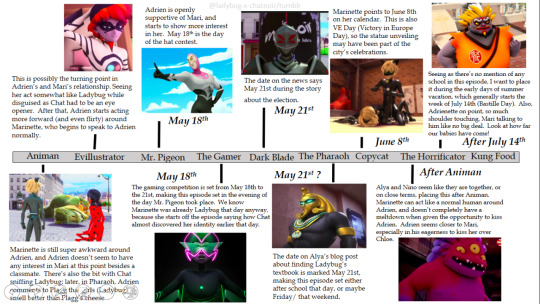
(Credit: https://ladybug-x-chatnoir.tumblr.com/post/138842131342/here-is-a-visual-timeline-based-off-of )
Now that means it’s either the 2nd or the 9th. I think if we look at the school dates when the year “Befana” takes place we may determine her birthday.
So if Marinette is turning 14 in “Befana” and if she is born in 2003, that means “Befana” occurs in 2017. In the episode she talked about being at school that week, and “yesterday” she caught Nino listening to her fav song at school , however she did not mention being at school on her actual birthday. Which in 2017, Mari’s birthday is on a Sunday and I had to check but France does have Middle and High schools that choose to have courses on Saturdays. So we are deficiently in the right timeframe!
It occurred to me that July is when Summer Holidays begin for France. And according to this website, France’s summer holidays begun on July 8th in 2017.

(Credit: https://www.renestance.com/blog/2017-school-holidays-in-france/ )
Now if we rewatch “Befana”, we can see that the classroom is bare of any school work or posters. Now everyone who has been to middle or high school knows there are big clean ups that happen the day Summer Holidays begin. And that’s what I think we are seeing here. A completely clean classroom ready for a new year.

(Credit: https://www.youtube.com/watch?v=nTz8SC39s24)
I can conclude then that Marinette’s Birthday is on the 9th of July, and she was born in 2003!! THE PROOF IS IN DA PUDDIN THAT IS ADRIEN LOL!
So to quickly resummarise this double theory of mine:
Tom and Sabine were married on April 6th of 1998.
and
Marinette’s Birthday is on the 9th of July, and she was born in 2003.

Wow I spent six hours researching all this and now I’m super tired, I’m posting these theories because I will be MIA during May and possibly June because of Exams and Assignments for Uni. Enjoy reading this and I hope to hear your opinions and thoughts!!
REMEMBER THIS IS JUST A THEORY
Posted on 5th of July in 2019, sometime after Bakerix aired.
#miraculous ladybug#miraculousladybug#miraculous theory#ml spoilers#theories MLB#mlb#mlb spoilers#ml season 3#ml#Marinette Dupain-Cheng#Marinette#sabine cheng#tom dupain
197 notes
·
View notes
Text
RECENT NEWS, RESOURCES & STUDIES, early February 2020

Welcome to my latest summary of recent ecommerce news, resources & studies including search, analytics, content marketing, social media & Etsy! This covers articles I came across since the late January report, although some may be older than that. Report is a bit short because I was sick this last week; don’t worry, I used hand sanitizer before typing this up, so you are all safe 🤒
I am currently looking into setting up a new ecommerce business forum where we can discuss this sort of news, as well as any day-to-day issues we face. I need some good suggestions for a cheap or free forum space that has some editing tools, is fairly intuitive for inexperienced members, and is accessible. If you have any suggestions, please reply to this post, email me on my website, or send me a tweet. (I will put out a survey once we narrow this down to some good candidates, but if you have any other comments on what you want from such a forum, please include those too!)
As always, if you see any stories I might be interested in, please let me know!
TOP NEWS & ARTICLES
Searchmetrics says Etsy did quite well [podcast & text] in the Google January Core Update, while both Amazon and Walmart lost a little bit. “Who won January? I’m going to say Etsy. Etsy has really done a tremendous job [with Google visibility] over the last two years. Sure, they’ve been on the winning side of the algorithm update, but consistently, being in that a position, from my experience, isn’t by chance.” Here’s more analysis listing the US winners and losers, including by subject category (sadly, not shopping sites). Marie Haynes says that the update likely targeted sites that aren’t properly disclosing affiliate links, as well as some pet health sites.
Since a quarter of Americans have a disability, your website, your products & your marketing should be more accessible. Lots of good ideas in here!
ETSY NEWS
TOU alert: Etsy has banned the sale of spent bullet casings (often used as craft supplies). It’s not clear why. There is a thread from a seller whose listings were pulled here.
The 2020 wedding trends blog post is one of those pieces that is useful to sellers & buyers alike, and is also good for Etsy because it attracts outside articles and links. Some trend & keyword info of interest: ”there has been a 171% increase in searches on Etsy for bridesman items and a 72% increase in searches for best woman items”... “searches for ‘70s invitations increase 18% and searches for disco ball items increase 18%” ...”24% increase in searches for bridal jackets and a 4% increase in searches for women’s pantsuits” …”searches for reused, recycled, or reclaimed wedding items increasing 7%” in the last six months (compared to the same time the previous year).
Etsy released its annual diversity & inclusion report on January 29, getting some media coverage along the way, for example here, here and here.
Reverb hired David Mandelbrot as their new CEO; he most recently ran Indiegogo. (Etsy bought Reverb last year.)
The 4th quarter 2019 results will be out Feb. 26. I am currently planning on doing my usual summary thread in the forum.
Decent overview of product photography for beginners, with some pointers on what Etsy wants you to do with photos. For example, “The recommended size for listing images is 2000px for the shortest side of the image, and a resolution of 72PPI.”
SEO: GOOGLE & OTHER SEARCH ENGINES
So you know what Etsy tags are, but you get confused when people talk about tags for search engines? Read this beginners guide to SEO meta tags. (not needed for Etsy shops, but it is terminology used by some website builder sites, as well as coders of course.)
Data provider Jumpshot will be closing due to the controversies over the revelation that their parent company Avast (the anti-virus software) provided user activity to Jumpshot while perhaps not always fully disclosing this to the users. This will affect some SEO tools that relied on these click stats to generate estimates for traffic & search term use, Hitwise & Moz among them. “In all likelihood, Avast took the action to protect its core business, as multiple articles, including from Consumer Reports, called out the company for its data collection practices, while some called for the uninstallation of the Avast software. This is probably as much PR damage control as it is driven by any principled position.”
Forbes appears to have been hit by some Google search issue, but it happened later than the Core Update, so no one is sure what is going on.They were previously penalized for selling links, but that was years ago.
John Mueller listed all of the big Google search news from January in this almost 9 minute video. Click to see the detailed info under the video, because they helpfully summarized the important topics by timestamp, and linked to text resources as well. (Some of it is technical/coding relating; you have been warned!)
There may be another big Google ranking update happening right now (Feb. 9), as tracked by Search Engine Roundtable. Check that site over the next few days for any updates.
CONTENT MARKETING & SOCIAL MEDIA (includes blogging & emails)
The time you send your marketing emails matters, although it’s going to vary more than this article lets on. Keep track of your own stats.
Debunking some myths about Instagram, including the importance of your follower count. “...your follower count isn’t the most important metric on Instagram. Your engagement rate is. Your engagement rate (which is found by calculating the number of engagements you receive divided by EITHER the number of people who saw it OR your total followers, depending on who you ask) is crucial.”
If you use the app Social Captain for Instagram, be aware that your Instagram password was publicly available in the source code.
Facebook’s algorithm has a lot of different factors controlling who sees your posts, including actually having conversations with others, and including “quality, original videos.”
Facebook’s revenue was up 25% in the 4th quarter of 2019, to $21.1 billion, but they expect the privacy controversies to cut into growth this year.
Pinterest is testing an augmented reality tool called “Try On” that allows users to see what they will look like with specific lipstick colours.
ONLINE ADVERTISING (SEARCH ENGINES, SOCIAL MEDIA, & OTHERS)
Google Shopping Ads will soon be shown in Gmail accounts, YouTube and the Discover feed, starting March 4th. Note that “Retailers have been steadily shifty more of their search budgets from text to Shopping ads.”
A comparison of Google Ads vs. Facebook Ads, with plenty of tips. According to them, if you are seriously considering one, you should probably do both. “When we talk about Facebook, we’re also talking about Instagram, What’sApp, and Facebook Messenger. Google also includes YouTube, the second-most trafficked site in the world (behind Google itself).”
Google’s revenue was up 17% in the 4th quarter in 2019, almost all of it from advertising. YouTube makes more on ads than Amazon does.
ECOMMERCE NEWS, IDEAS, TRENDS
eBay released its 4th quarter results for 2019 on January 28, with revenue down 2% and gross merchandise value down 5%. Amazon’s sales were up 21% for the 4th quarter.
BigCommerce now allows customers to check out in over 100 currencies, integrated with several different payment processors.
Wondering what a good conversion rate would be for different ecommerce pages? Here’s a brief overview of the known stats, with some tips on improving.. (Note that any action can be counted as a conversion, including signing up for an email list, so this isn’t just about purchases.)
BUSINESS & CONSUMER STUDIES, STATS & REPORTS; SOCIOLOGY & PSYCHOLOGY, CUSTOMER SERVICE
Are you marketing to Generation Z, or think you should be? Here are 52 facts (with the citations); some highlights: Gen Z has more members than millennials do, and “As of 2020, Gen Z makes up more than 40% of U.S. consumers.” and finally “When shopping online or in stores, 65% of Gen Z prefers to see as few items as possible out of stock” (that last one explains a feedback I received, I think LOL Kind of hard on Etsy when you might have a listing with multiple choices & you only have the one left.)
A study of Cyber Week email open & click rates shows that it might be better not to mention the holidays or discounts.
This article warns consumers of the tricks ecommerce sites use to nudge people to buy more, including some clear examples of deception. “A study by Princeton University and the University of Chicago singled out online clothing seller Fashion Nova, which tells customers that items in their cart “are in high demand.” The problem? The message appears for any item that’s added to the cart. Fashion Nova’s cart also tells shoppers that their items are being “reserved” for 10 minutes. But nothing happens to the items after the 10 minutes are up.”
MISCELLANEOUS
YouTube wants Clearview AI’s face recognition program to stop scraping its videos for content, and to delete anything it has already collected. (Twitter did the same last month.)
#CindyLouWho2NewsUpdates#SEO#search engine optimization#search engine marketing#EtsyNews#etsy#Social media#contentmarketing#content marketing#Ecommerce#smallbiz#SEOTips#customer service#ppc advertising#Onlinemarketing#ecommercetips#emailmarketing#socialmedianews
2 notes
·
View notes
Link
By Kevin Reed
17 August 2019
Recently published news reports and legal studies have revealed that the US government has been violating basic democratic rights by using facial recognition to monitor and track the public. These reports have also shown that facial recognition is used widely as a preferred form of police biometrics, i.e., the science of identification and tracking through facial signatures and other kinds of unique individual measurements such as finger, palm and voice prints and dental and DNA profiles.
Every level of law enforcement—from city and state police departments to federal border patrol and military-intelligence—has been participating in the mass collection and analysis of facial images. This includes photos taken for government-issued ID cards and driver’s licenses and others captured from hidden surveillance cameras in public places such as border crossings, highways, parks, sporting events, sidewalks and airports as well as those scraped from social media accounts.
Georgetown Law published a study on May 19 called “America Under Watch” which documented the widespread use of facial recognition by the city governments and police departments of Detroit and Chicago. As part of its conclusion, the Georgetown report said, “real-time video surveillance threatens to create a world where, once you set foot outside, the government can track your every move. For the 3.3 million Americans residing in Detroit and Chicago, this may already be a reality.”
However, just as public outrage over these revelations had begun to emerge and several cities have been forced to ban the use of facial recognition—including San Francisco and Oakland, California as well as Somerville, Massachusetts—it became clear that the latest media exposures have a twofold political purpose.
On the one hand, the most conscious sections of the ruling establishment are concerned about the explosive reaction of millions of people to unfettered 24/7 state monitoring of their activities and whereabouts. Therefore, significant political pressure is being applied to force Congress to adopt as soon as possible a federal regulatory framework for the expanding biometric surveillance apparatus.
On the other hand, Democratic Party representatives and their supporters are using identity politics to conceal the serious implications of secret facial profiling and the trend toward a police state that it represents. By focusing exclusively on studies indicating race and gender bias in facial recognition tools, the Democrats are seeking to divert public anger away from a mass struggle by the working class in defense of democratic rights and into support for laws that will legalize the surveillance.
Among the most often referenced of the race and gender bias studies has been the MIT Media Lab Gender Shades project by Joy Buolamwini—a self-proclaimed “poet of code” and campaigner against “algorithmic bias”—who published her first results in 2017. The initial Gender Shades analysis of facial analysis technology from IBM, Microsoft and Face++ showed that “male subjects were more accurately classified than female subjects,” “lighter subjects were more accurately classified than darker individuals” and “all classifiers performed worst on darker female subjects.”
A follow-up study in 2018 by Buolamwini also showed that facial recognition tools from Amazon and Kairos exhibited the same trends performing “better on male faces than female faces” and “better on lighter faces than darker faces” and “have the current worst performance for the darker female sub-group.”
A similar—although far less scientific—test was performed by the ACLU on Amazon’s Rekognition facial analysis software in July 2018. A database of 25,000 mugshots was compared against public photos of every member of the US House and Senate. Amazon’s tool returned 28 false matches identifying them “as other people who have been arrested for a crime.”
The ACLU report then said, “The false matches were disproportionately of people of color … 40 percent of Rekognition’s false matches in our test were of people of color, even though they make up only 20 percent of Congress.” Since Amazon’s Rekognition is currently being used as the facial analysis tool of choice by city, county and state police departments across the country, false identification rates of minorities are of legitimate concern among workers and young people.
However, the political objective behind the Gender Shades and ACLU studies is not to prove that facial recognition should be stopped immediately, but to insist that the technology can be improved upon. The ACLU says that what is needed is “transparency and accountability in artificial intelligence” and a moratorium on law enforcement use of facial recognition until “all necessary steps are taken to prevent them from harming vulnerable communities.”
In other words, according to the ACLU, police surveillance with facial recognition of the working class is fine and can go forward with appropriate technical adjustments that reduce false identification of minorities and with the adoption of acceptable federal government guidelines for its use.
Essentially, the MIT and ACLU findings have been seized upon by the New York Times, the Democrats and organizations such as the Democratic Socialists of America as a means of burying fundamental democratic questions beneath race and gender politics. What they are advocating is, in essence, a racialist ideology and politics that serve to divide the working class and prevent a unified struggle against the growing threat of a police state in America.
For example, in entirely predictable fashion, the Times published a snide article on February 8, 2018 with the headline “Facial recognition is accurate, if you’re a white guy,” which featured Joy Buolamwini and her Algorithmic Justice League.
What becomes clear in the course of the Times interview with Buolamwini is that she is on a mission for “inclusion” of minorities and women into the corrupt corporate world of government-sponsored artificial intelligence surveillance technology. Through the efforts of the Gender Shades study and others, organizations like IBM and the Ford Foundation—who talk to the Times about how they are “deeply committed” to “unbiased” and “transparent” spying on the public—get to pose as “progressive” companies.
On July 10 of this year, the Times also published a comment by its graphics editor Sahil Chinoy headlined, “The Racist History Behind Facial Recognition,” that mechanically and ahistorically sought to draw a direct line of causality between the reactionary eugenics and racialist pseudoscience of the 19th and early 20th centuries—that claimed head shape and facial morphology characteristics were predictive of behavior and mental capacities—with modern biometrics.
The purpose of the Times reporting is to show that, through the anti-bias efforts of Buolamwini and others who call for “fairness and inclusion” in facial recognition, the corporate partners of the FBI and the surveillance state itself can be convinced of the value of “standards for accountability and transparency.”
However, as was clearly shown in the second Gender Shades study, the result of this campaign against race and gender bias has been the improvement of software algorithms by the developers. Although this aspect of Buolamwini’s study has been given little attention, the 2018 results showed, “Within 7 months, all targeted corporations were able to significantly reduce error gaps … revealing that if prioritized, the disparities in performance between intersectional subgroups can be addressed and minimized in a reasonable amount of time.”
This was also echoed in a statement sent to Buolamwini by IBM which, according to the Times, said that within a month of her second study results, the company “will roll out an improved service with a nearly 10-fold increase in accuracy on darker-skinned women.”
The race and gender bias campaign has also fueled efforts by Democratic Party politicians across the country to cover up their own role in the creation and maintenance of the surveillance state apparatus by posturing as opponents of the false identification flaws of the software.
The racialist character of identity politics was on full display during a hearing of the House Oversight and Reform Committee on May 22, for example, when Rep. Alexandria Ocasio-Cortez (Democrat of New York)—a member of the Democratic Socialists of America (DSA)—concluded her questioning of the panelists with a stage-managed exchange with Buolamwini who was a key witness. After being asked by Ocasio-Cortez what demographic facial recognition tools are “mostly effective on” and “who are the primary engineers and designers of these algorithms?” Buolamwini responded multiple times with “white men.”
Ultimately, the efforts of the Democrats, the DSA and identity politics advocates are aimed at diverting the anger of the working class against the mass surveillance into demands for congressional action that would make it legal to spy on the public with facial recognition tools as long as it is “fair and unbiased.”
The defense of democratic rights cannot be entrusted to these representatives of the affluent middle class who are employing methods of deception to conceal their own moneyed interests in getting on board with the private surveillance industry as well as the true meaning and historical implications of what is unfolding in society.
The growth of extreme economic inequality, the unending US wars in the Middle East and elsewhere and the evolution of the administration of President Donald Trump toward authoritarian rule—with the support of the Democratic Party—are all aspects of decaying democracy in advance of a massive confrontation between the working class and the ruling establishment in America and internationally.
It is in preparation for this conflict that the surveillance state is being erected and perfected. Workers, students and young people must unify across all national, racial, gender and language differences—independently of the government, the corporations and the middle-class pseudo-left—to make their own preparations for the major class battles now on the horizon.
#racism#identity politics#democratic socialists of america#democratic party#facial recognition technology#racialism#racial identity
5 notes
·
View notes
Text
Top 10 Fall Trends of 2019 | Fall Trends for Women Over 40
New Post has been published on https://beauty4youstore.com/top-10-fall-trends-of-2019-fall-trends-for-women-over-40/
Top 10 Fall Trends of 2019 | Fall Trends for Women Over 40
(adsbygoogle = window.adsbygoogle || []).push(); @media screen and (min-width: 1201px) .kmhci5d6ddb6387f40 display: block; @media screen and (min-width: 993px) and (max-width: 1200px) .kmhci5d6ddb6387f40 display: block; @media screen and (min-width: 769px) and (max-width: 992px) .kmhci5d6ddb6387f40 display: block; @media screen and (min-width: 768px) and (max-width: 768px) .kmhci5d6ddb6387f40 display: block; @media screen and (max-width: 767px) .kmhci5d6ddb6387f40 display: block; I’m sharing the top10 fall trends of 2019 and my personal favorite is animal print, what’s yours? Don’t forget to follow me over on Instagram for more style inspiration: @soheatherblog. Thank you so much for stopping by today! XO, Heather ***************************RELATED BLOG POST************************ COMING SOON *************************OTHER RELATED VIDEOS**************************** 5 INVESTMENT PIECES EVERY WOMAN SHOULD OWN: […]
#2019 fashion trends#busbee style#busbeestyle tv#Clothing trends#Clothing Trends 2019#fall fashion trends#fall outfits women over 40#fall trends 2019#fashion for women over 40#fashion over 40#fashion over forty#Fashion trends#Fashion Trends 2019#fashion trends for women over 40 2019#how to wear fashion trends#iMovie#outfit ideas 40 something#outfit ideas for over 40#over 40#over 40 fashion#over 40 style#top fall fashion trends#top fashion trends for 2019#what to wear#what to wear in 2019#Fashion Trends 2019 videos
0 notes
Text
The Essence of Evil: Sex with Children Has Become Big Business in America
By John W. Whitehead for Global Research, April 24, 2019
“Children are being targeted and sold for sex in America every day.”—John Ryan, National Center for Missing & Exploited Children
Children, young girls—some as young as 9 years old—are being bought and sold for sex in America. The average age for a young woman being sold for sex is now 13 years old.
This is America’s dirty little secret.
Sex trafficking—especially when it comes to the buying and selling of young girls—has become big business in America, the fastest growing business in organized crime and the second most-lucrative commodity traded illegally after drugs and guns.
As investigative journalist Amy Fine Collins notes,
“It’s become more lucrative and much safer to sell malleable teens than drugs or guns. A pound of heroin or an AK-47 can be retailed once, but a young girl can be sold 10 to 15 times a day—and a ‘righteous’ pimp confiscates 100 percent of her earnings.”
Consider this: every two minutes, a child is exploited in the sex industry.
According to USA Today, adults purchase children for sex at least 2.5 million times a year in the United States.
Who buys a child for sex? Otherwise ordinary men from all walks of life.
“They could be your co-worker, doctor, pastor or spouse,” writes journalist Tim Swarens, who spent more than a year investigating the sex trade in America.
In Georgia alone, it is estimated that 7,200 men (half of them in their 30s) seek to purchase sex with adolescent girls each month, averaging roughly 300 a day.
On average, a child might be raped by 6,000 men during a five-year period of servitude.
It is estimated that at least 100,000 children—girls and boys—are bought and sold for sex in the U.S. every year, with as many as 300,000 children in danger of being trafficked each year. Some of these children are forcefully abducted, others are runaways, and still others are sold into the system by relatives and acquaintances.
“Human trafficking—the commercial sexual exploitation of American children and women, via the Internet, strip clubs, escort services, or street prostitution—is on its way to becoming one of the worst crimes in the U.S.,” said prosecutor Krishna Patel.
This is an industry that revolves around cheap sex on the fly, with young girls and women who are sold to 50 men each day for $25 apiece, while their handlers make $150,000 to $200,000 per child each year.
This is not a problem found only in big cities.
It’s happening everywhere, right under our noses, in suburbs, cities and towns across the nation.
As Ernie Allen of the National Center for Missing and Exploited Children points out,
“The only way not to find this in any American city is simply not to look for it.”
Don’t fool yourselves into believing that this is merely a concern for lower income communities or immigrants.
It’s not.
It is estimated that there are 100,000 to 150,000 under-aged child sex workers in the U.S. These girls aren’t volunteering to be sex slaves. They’re being lured—forced—trafficked into it. In most cases, they have no choice.
In order to avoid detection (in some cases aided and abetted by the police) and cater to male buyers’ demand for sex with different women, pimps and the gangs and crime syndicates they work for have turned sex trafficking into a highly mobile enterprise, with trafficked girls, boys and women constantly being moved from city to city, state to state, and country to country.
For instance, the Baltimore-Washington area, referred to as The Circuit, with its I-95 corridor dotted with rest stops, bus stations and truck stops, is a hub for the sex trade.
No doubt about it: this is a highly profitable, highly organized and highly sophisticated sex trafficking business that operates in towns large and small, raking in upwards of $9.5 billion a year in the U.S. alone by abducting and selling young girls for sex.
Every year, the girls being bought and sold gets younger and younger.
The average age of those being trafficked is 13. Yet as the head of a group that combats trafficking pointed out,
“Let’s think about what average means. That means there are children younger than 13. That means 8-, 9-, 10-year-olds.“
“For every 10 women rescued, there are 50 to 100 more women who are brought in by the traffickers. Unfortunately, they’re not 18- or 20-year-olds anymore,” noted a 25-year-old victim of trafficking. “They’re minors as young as 13 who are being trafficked. They’re little girls.”
Where did this appetite for young girls come from?
Look around you.
Young girls have been sexualized for years now in music videos, on billboards, in television ads, and in clothing stores. Marketers have created a demand for young flesh and a ready supply of over-sexualized children.
“All it takes is one look at MySpace photos of teens to see examples—if they aren’t imitating porn they’ve actually seen, they’re imitating the porn-inspired images and poses they’ve absorbed elsewhere,” writes Jessica Bennett for Newsweek. “Latex, corsets and stripper heels, once the fashion of porn stars, have made their way into middle and high school.”
This is what Bennett refers to as the “pornification of a generation.”
“In a market that sells high heels for babies and thongs for tweens, it doesn’t take a genius to see that sex, if not porn, has invaded our lives,” concludes Bennett. “Whether we welcome it or not, television brings it into our living rooms and the Web brings it into our bedrooms. According to a 2007 study from the University of Alberta, as many as 90 percent of boys and 70 percent of girls aged 13 to 14 have accessed sexually explicit content at least once.”
In other words, the culture is grooming these young people to be preyed upon by sexual predators. And then we wonder why our young women are being preyed on, trafficked and abused?
Social media makes it all too easy. As one news center reported,
“Finding girls is easy for pimps. They look on MySpace, Facebook, and other social networks. They and their assistants cruise malls, high schools and middle schools. They pick them up at bus stops. On the trolley. Girl-to-girl recruitment sometimes happens.”
Foster homes and youth shelters have also become prime targets for traffickers.
Rarely do these girls enter into prostitution voluntarily. Many start out as runaways or throwaways, only to be snatched up by pimps or larger sex rings. Others, persuaded to meet up with a stranger after interacting online through one of the many social networking sites, find themselves quickly initiated into their new lives as sex slaves.
Debbie, a straight-A student who belonged to a close-knit Air Force family living in Phoenix, Ariz., is an example of this trading of flesh. Debbie was 15 when she was snatched from her driveway by an acquaintance-friend. Forced into a car, Debbie was bound and taken to an unknown location, held at gunpoint and raped by multiple men. She was then crammed into a small dog kennel and forced to eat dog biscuits. Debbie’s captors advertised her services on Craigslist. Those who responded were often married with children, and the money that Debbie “earned” for sex was given to her kidnappers. The gang raping continued. After searching the apartment where Debbie was held captive, police finally found Debbie stuffed in a drawer under a bed. Her harrowing ordeal lasted for 40 days.
While Debbie was fortunate enough to be rescued, others are not so lucky. According to the National Center for Missing and Exploited Children, nearly 800,000 children go missing every year (roughly 2,185 children a day).
With a growing demand for sexual slavery and an endless supply of girls and women who can be targeted for abduction, this is not a problem that’s going away anytime soon.
For those trafficked, it’s a nightmare from beginning to end.
Those being sold for sex have an average life expectancy of seven years, and those years are a living nightmare of endless rape, forced drugging, humiliation, degradation, threats, disease, pregnancies, abortions, miscarriages, torture, pain, and always the constant fear of being killed or, worse, having those you love hurt or killed.
Peter Landesman paints the full horrors of life for those victims of the sex trade in his New York Times article “The Girls Next Door”:
Andrea told me that she and the other children she was held with were frequently beaten to keep them off-balance and obedient. Sometimes they were videotaped while being forced to have sex with adults or one another. Often, she said, she was asked to play roles: the therapist patient or the obedient daughter. Her cell of sex traffickers offered three age ranges of sex partners–toddler to age 4, 5 to 12 and teens–as well as what she called a “damage group.” “In the damage group, they can hit you or do anything they want to,” she explained. “Though sex always hurts when you are little, so it’s always violent, everything was much more painful once you were placed in the damage group.”
What Andrea described next shows just how depraved some portions of American society have become.
“They’d get you hungry then to train you” to have oral sex. “They put honey on a man. For the littlest kids, you had to learn not to gag. And they would push things in you so you would open up better. We learned responses. Like if they wanted us to be sultry or sexy or scared. Most of them wanted you scared. When I got older, I’d teach the younger kids how to float away so things didn’t hurt.”
Immigration and customs enforcement agents at the Cyber Crimes Center in Fairfax, Va., report that when it comes to sex, the appetites of many Americans have now changed. What was once considered abnormal is now the norm. These agents are tracking a clear spike in the demand for harder-core pornography on the Internet. As one agent noted,
“We’ve become desensitized by the soft stuff; now we need a harder and harder hit.”
This trend is reflected by the treatment many of the girls receive at the hands of the drug traffickers and the men who purchase them. Peter Landesman interviewed Rosario, a Mexican woman who had been trafficked to New York and held captive for a number of years. She said:
“In America, we had ‘special jobs.’ Oral sex, anal sex, often with many men. Sex is now more adventurous, harder.”
A common thread woven through most survivors’ experiences is being forced to go without sleep or food until they have met their sex quota of at least 40 men. One woman recounts how her trafficker made her lie face down on the floor when she was pregnant and then literally jumped on her back, forcing her to miscarry.
Holly Austin Smith (image on the right) was abducted when she was 14 years old, raped, and then forced to prostitute herself. Her pimp, when brought to trial, was only made to serve a year in prison.
Barbara Amaya was repeatedly sold between traffickers, abused, shot, stabbed, raped, kidnapped, trafficked, beaten, and jailed all before she was 18 years old.
“I had a quota that I was supposed to fill every night. And if I didn’t have that amount of money, I would get beat, thrown down the stairs. He beat me once with wire coat hangers, the kind you hang up clothes, he straightened it out and my whole back was bleeding.”
As David McSwane recounts in a chilling piece for the Herald-Tribune:
“In Oakland Park, an industrial Fort Lauderdale suburb, federal agents in 2011 encountered a brothel operated by a married couple. Inside ‘The Boom Boom Room,’ as it was known, customers paid a fee and were given a condom and a timer and left alone with one of the brothel’s eight teenagers, children as young as 13. A 16-year-old foster child testified that he acted as security, while a 17-year-old girl told a federal judge she was forced to have sex with as many as 20 men a night.”
One particular sex trafficking ring catered specifically to migrant workers employed seasonally on farms throughout the southeastern states, especially the Carolinas and Georgia, although it’s a flourishing business in every state in the country. Traffickers transport the women from farm to farm, where migrant workers would line up outside shacks, as many as 30 at a time, to have sex with them before they were transported to yet another farm where the process would begin all over again.
This growing evil is, for all intents and purposes, out in the open.
Trafficked women and children are advertised on the internet, transported on the interstate, and bought and sold in swanky hotels.
Indeed, as I make clear in my book Battlefield America: The War on the American People, the government’s war on sex trafficking—much like the government’s war on terrorism, drugs and crime—has become a perfect excuse for inflicting more police state tactics (police check points, searches, surveillance, and heightened security) on a vulnerable public, while doing little to make our communities safer.
So what can you do?
Educate yourselves and your children about this growing menace in our communities.
Stop feeding the monster: Sex trafficking is part of a larger continuum in America that runs the gamut from homelessness, poverty, and self-esteem issues to sexualized television, the glorification of a pimp/ho culture—what is often referred to as the pornification of America—and a billion dollar sex industry built on the back of pornography, music, entertainment, etc.
This epidemic is largely one of our own making, especially in a corporate age where the value placed on human life takes a backseat to profit. It is estimated that the porn industry brings in more money than Amazon, Microsoft, Google, Apple, and Yahoo.
Call on your city councils, elected officials and police departments to make the battle against sex trafficking a top priority, more so even than the so-called war on terror and drugs and the militarization of law enforcement.
Stop prosecuting adults for victimless “crimes” such as growing lettuce in their front yard and focus on putting away the pimps and buyers who victimize these young women.
Finally, the police need to do a better job of training, identifying and responding to these issues; communities and social services need to do a better job of protecting runaways, who are the primary targets of traffickers; legislators need to pass legislation aimed at prosecuting traffickers and “johns,” the buyers who drive the demand for sex slaves; and hotels need to stop enabling these traffickers, by providing them with rooms and cover for their dirty deeds.
That so many women and children continue to be victimized, brutalized and treated like human cargo is due to three things: one, a consumer demand that is increasingly lucrative for everyone involved—except the victims; two, a level of corruption so invasive on both a local and international scale that there is little hope of working through established channels for change; and three, an eerie silence from individuals who fail to speak out against such atrocities.
But the truth is that we are all guilty of contributing to this human suffering. The traffickers are guilty. The consumers are guilty. The corrupt law enforcement officials are guilty. The women’s groups who do nothing are guilty. The foreign peacekeepers and aid workers who contribute to the demand for sex slaves are guilty. Most of all, every individual who does not raise a hue and cry over the atrocities being committed against women and children in almost every nation around the globe—including the United States—is guilty.
*
Note to readers: please click the share buttons below. Forward this article to your email lists. Crosspost on your blog site, internet forums. etc.
Constitutional attorney and author John W. Whitehead is founder and president of The Rutherford Institute. His new book Battlefield America: The War on the American People (SelectBooks, 2015) is available online at www.amazon.com. Whitehead can be contacted at [email protected].
#spread this#make sure people know#get educated#be aware#save some lives#i worry many of you are prime targets for this#I can see the insecurity and desire for attention#rape culture#human trafficking#mine#this is a problem throughout the world
14 notes
·
View notes